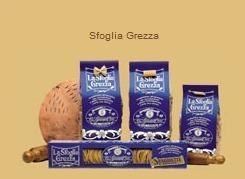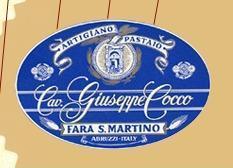
Pasta Grezza
€ Core price
Until the beginnings of the 20th century, the farmers in Fara San Martino used to grind the durum wheat harvested from their fields in a small stone mill near the sources of the river Verde. Wheat milling was a slow process yielding raw and coarse semolina, which was slightly dark and not as refined as today's production.
This raw semolina actually contained the best part of the bran. Back then farmers would preserve it in an effort to get the best from their toilsome work in the fields, much unlike landlords’ farm labourers who had to refine the wheat, thus disposing of the bran as a whole.
The housewives used to knead a mixture of raw semolina and spring water.
The resulting dough was similar to Cav. Giuseppe Cocco's "Sfoglia Grezza" that is still produced with a machine dating back to 1910.
This raw semolina actually contained the best part of the bran. Back then farmers would preserve it in an effort to get the best from their toilsome work in the fields, much unlike landlords’ farm labourers who had to refine the wheat, thus disposing of the bran as a whole.
The housewives used to knead a mixture of raw semolina and spring water.
The resulting dough was similar to Cav. Giuseppe Cocco's "Sfoglia Grezza" that is still produced with a machine dating back to 1910.
Supplier


Company

Website
 Italy
Italy
Country
Product details
Place of processing
Italy
Origin of main ingredient

Origin of main ingredient

Packaging formats

Packaging

Composition


